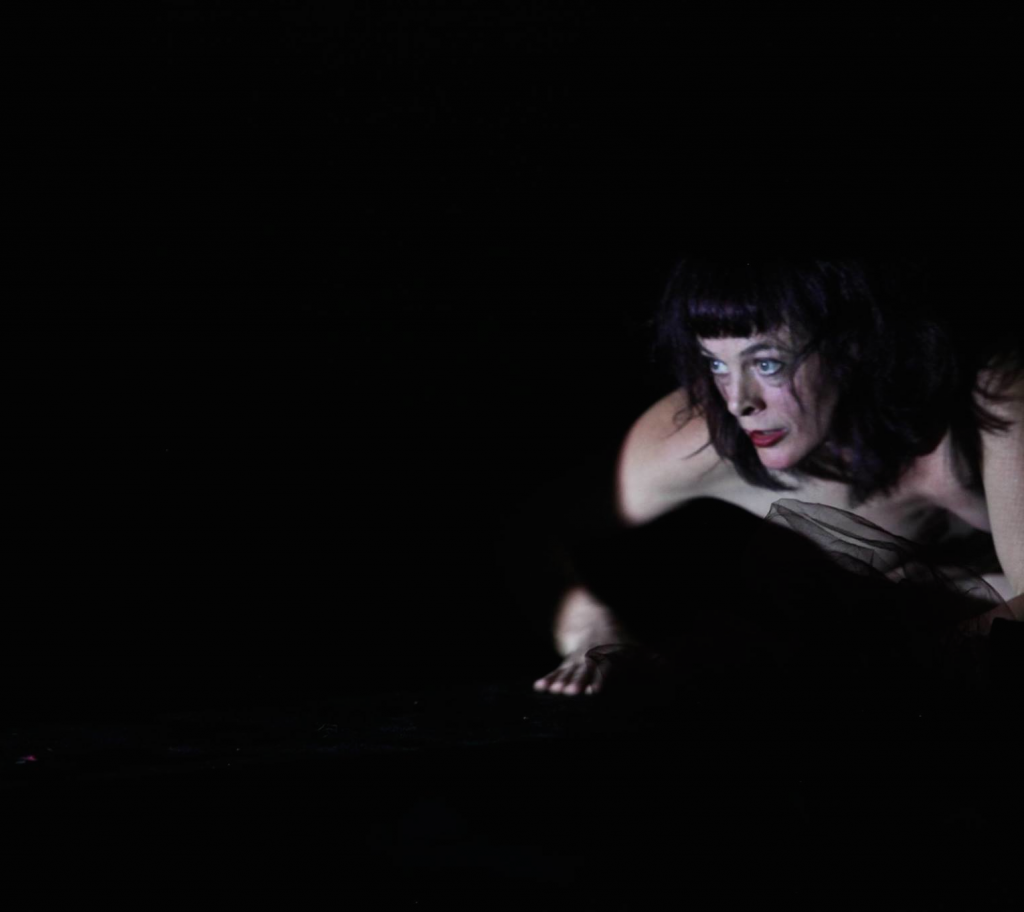The Cracks Are How The Light Gets In
 The Cracks Are How The Light Gets In, a solo performance by Deirdre Morris with Collaborator Iu-Hui Chua and Animation Design and Production by Brandon Gonzalez
The Cracks Are How The Light Gets In, a solo performance by Deirdre Morris with Collaborator Iu-Hui Chua and Animation Design and Production by Brandon Gonzalez
The Cracks Are How The Light Gets In, is a project based in questions of normative success, empowerment and vulnerability. This solo exploration offers an experience of live performance, multimedia video work, dance, physical theater, connection and revelation. Together we are looking to uncover and reveal the vulnerable and tender spaces in our bodies conditioned by notions of normative success.
Mainstream media culture has a narrowing effect on our lives. When the images it offers us are internalized, it narrows our definitions of beauty, power, intelligence and well being. Our identities are often portrayed in the media in tropes and stereotypes that misrepresent our actual lived experiences. This perpetuates those systems of oppression that allow sexism and racism to prevail in our society. It is the task of those of us that are marginalized by this portrayal of success to create our own shared spaces to celebrate our underrepresented, shared experiences.
Inspried by a passage in Rebecca Solnit’s Men Explain Things To Me, The Cracks Are How The Light Gets In, provokes questions of identity, intimacy, vulnerability, and relationship to power/empowerment interpreted as physical scores mapped as a memory game. The intertwining of time, place and space as a metaphor to understand the how-we-got-to-where-we-are-today in a media culture dominated by a normative idea of success and power that does not include shared lived experience but rather reaches for an ideal that is part automaton part technological cyborg. Our interest is in the flesh experience of the body and the sociological impact our shifting norms are wreaking on our tissues, nervous systems and ideas of balanced relationship to our ecologies.
Like forging a new kind of 21st century ritual, we are interested in dipping into the magic of the threads of connection representing a time, place or history as heritage maps displayed on our bodies, revealing the different kinds of strength, beauty, vitality and wisdom that is acquired through experience.
How do we reclaim our representation in popular media? How do we celebrate the lived experience of our everyday lives and the struggle against invisibility, invalidation and assimilation? How do we share our vitality, mastery, knowledge and strength?
Seeing through the lens of the queer/ed bodies, politics and questions of image in a virtual world become the lens we see our lives through. Live theater is a site we can explore an alternative to the mainstream media culture. A space where stories can be shared and explored for their universality that brings us together while thoughtfully questioning why we are a part.
